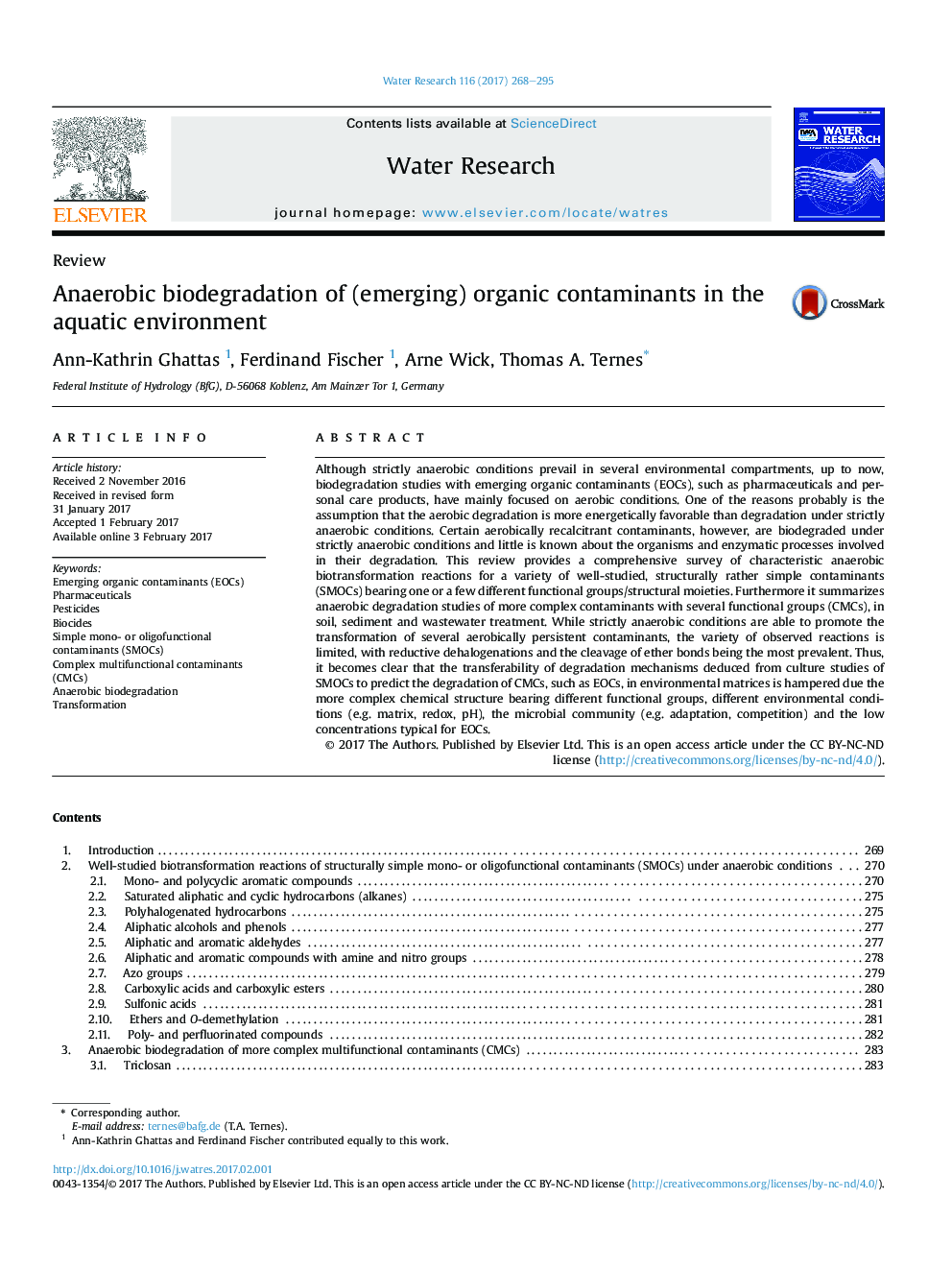| Article ID | Journal | Published Year | Pages | File Type |
|---|---|---|---|---|
| 5759026 | Water Research | 2017 | 28 Pages |
Abstract
Although strictly anaerobic conditions prevail in several environmental compartments, up to now, biodegradation studies with emerging organic contaminants (EOCs), such as pharmaceuticals and personal care products, have mainly focused on aerobic conditions. One of the reasons probably is the assumption that the aerobic degradation is more energetically favorable than degradation under strictly anaerobic conditions. Certain aerobically recalcitrant contaminants, however, are biodegraded under strictly anaerobic conditions and little is known about the organisms and enzymatic processes involved in their degradation. This review provides a comprehensive survey of characteristic anaerobic biotransformation reactions for a variety of well-studied, structurally rather simple contaminants (SMOCs) bearing one or a few different functional groups/structural moieties. Furthermore it summarizes anaerobic degradation studies of more complex contaminants with several functional groups (CMCs), in soil, sediment and wastewater treatment. While strictly anaerobic conditions are able to promote the transformation of several aerobically persistent contaminants, the variety of observed reactions is limited, with reductive dehalogenations and the cleavage of ether bonds being the most prevalent. Thus, it becomes clear that the transferability of degradation mechanisms deduced from culture studies of SMOCs to predict the degradation of CMCs, such as EOCs, in environmental matrices is hampered due the more complex chemical structure bearing different functional groups, different environmental conditions (e.g. matrix, redox, pH), the microbial community (e.g. adaptation, competition) and the low concentrations typical for EOCs.
Keywords
Related Topics
Physical Sciences and Engineering
Earth and Planetary Sciences
Earth-Surface Processes
Authors
Ann-Kathrin Ghattas, Ferdinand Fischer, Arne Wick, Thomas A. Ternes,
